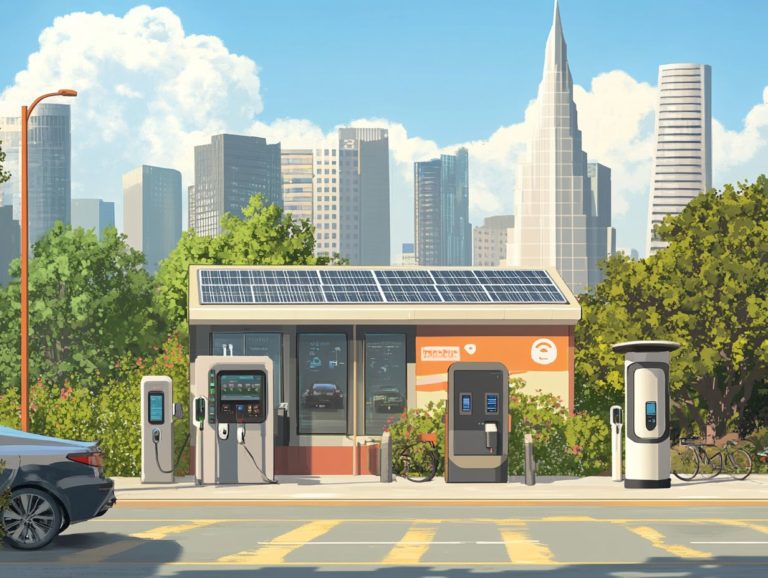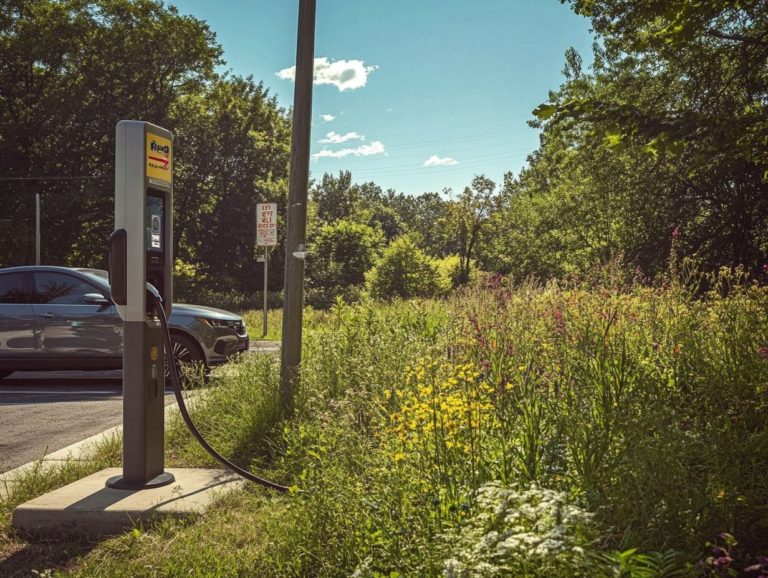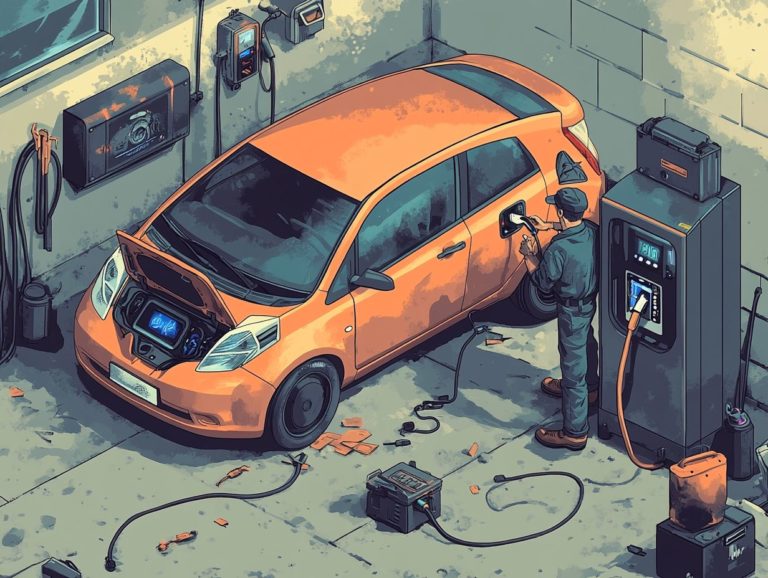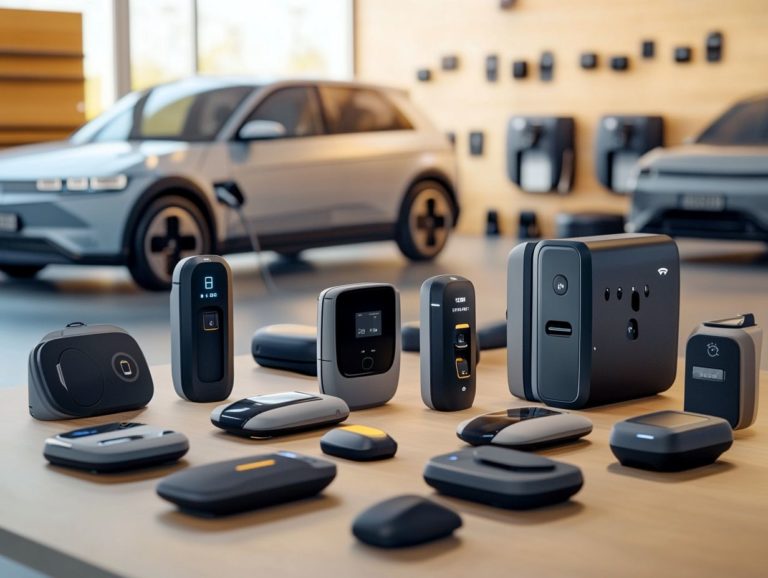what to expect from ev charging in 2030
As you approach 2030, prepare for transformative changes in the electric vehicle (EV) charging landscape.
This article delves into the anticipated technological advancements in charging infrastructure and battery technology, showcasing innovations that promise to enhance both convenience and efficiency.
You’ll explore the environmental impact of EVs, learning how they contribute to reducing your carbon footprint while also recognizing the challenges that lie ahead.
We will also examine changing consumer behaviors and the potential growth of the EV charging industry, influenced by government policies and incentives.
Dive in to discover what the future holds for EV charging and how these developments will shape your world.
Contents
- Key Takeaways:
- The Current State of EV Charging
- Expected Technological Advancements
- Impact on the Environment
- Changes in Consumer Behavior
- Adopting EVs and Charging Habits
- Future of the EV Charging Industry
- Frequently Asked Questions
- What to expect from EV charging in 2030?
- Will EV charging be more widely available in 2030?
- What advancements can we expect in EV charging technology by 2030?
- How will EV charging prices change by 2030?
- Will renewable energy sources play a role in EV charging in 2030?
- What can we expect from EV charging in terms of convenience and user experience in 2030?
Key Takeaways:
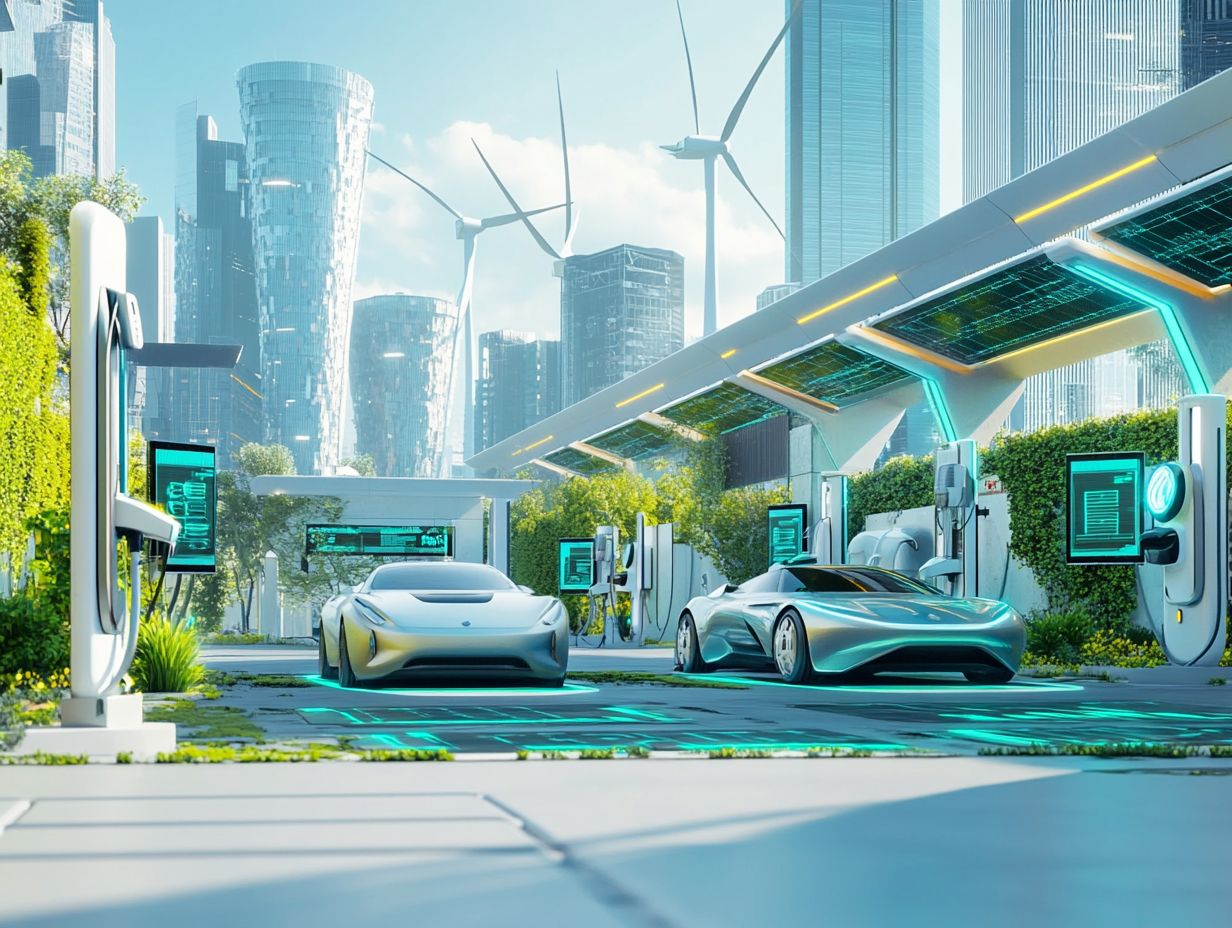
- By 2030, advancements in charging infrastructure and battery technology will significantly reduce EV charging time, making it more convenient for drivers.
- Get ready for a surge in EV popularity and a massive switch to renewable energy sources in charging, which will greatly reduce carbon emissions and contribute to a cleaner environment.
- The EV charging industry is expected to experience significant growth driven by government policies and incentives aimed at promoting electric mobility.
The Current State of EV Charging
The current state of EV charging reveals a landscape in rapid evolution, shaped by the Biden administration’s commitment to clean energy. There is an urgent need to bolster charging infrastructure across the United States.
As you embrace electric vehicle (EV) adoption motivated by both consumer sentiment and climate objectives the significance of robust charging ports becomes abundantly clear.
According to a study by the National Renewable Energy Laboratory (NREL), the demand for public and residential chargers is skyrocketing. This has prompted substantial investments in different types of home and public chargers to meet the needs of EV drivers.
Recent statistics indicate that there are now over 140,000 public charging ports installed across America, and this figure continues to climb. Local and federal initiatives are working to establish a comprehensive network.
The Biden administration has set an ambitious goal of building 500,000 new charging stations by 2030. This move aligns with growing consumer interest, as about 42% of potential car buyers recently expressed a desire to transition to electric vehicles.
This shift in consumer behavior is pivotal, emphasizing the need for accessible charging options that cater to both urban residents and those in rural areas.
As infrastructure expands, so does the understanding of charging behavior, which is essential for alleviating range anxiety and ensuring a smooth transition to electric vehicle ownership.
Expected Technological Advancements
Anticipated technological advancements in the electric vehicle (EV) sector are poised to transform the charging infrastructure. These changes will effectively tackle existing market challenges and significantly boost EV adoption rates by 2030.
Expect innovations in battery technology and charging systems to lead to faster, more efficient charging solutions. This evolution will not only facilitate the widespread use of autonomous vehicles but also enhance installation services.
Innovations in Charging Infrastructure
Innovations in charging infrastructure are revolutionizing how you access energy as an EV driver. Fast charging stations are becoming increasingly common in both urban and rural settings.
These advancements boost the availability of electric vehicle chargers and align with strategic deployment plans designed to expand the overall network of charging ports, keeping pace with your growing demands.
Take California, for example, where a remarkable number of high-speed charging stations have been introduced. This makes long-distance travel a breeze for electric vehicle owners.
Meanwhile, New York is investing in cutting-edge charging technologies that facilitate quicker and more efficient energy transfers. This ultimately minimizes your downtime on the road.
Across the nation, cities are actively exploring partnerships with private companies to place charging ports in high-traffic areas. This ensures you have convenient access to charging options whenever you need them.
These initiatives not only bolster the surge in electric vehicle sales but also play a vital role in fostering a greener, more sustainable future for everyone.
Stay informed and engaged with the EV movement as the future unfolds.
Improvements in Battery Technology
Improvements in battery technology are vital for your electric vehicle experience, addressing energy needs for sustainability and boosting your confidence in the EV market. Innovations in energy density, charging speed, and battery lifespan are set to significantly enhance both the performance and appeal of electric vehicles as they transition toward zero-emission standards.
Among these advancements, solid-state batteries stand out as a promising solution, offering higher energy capacities while ensuring greater safety compared to traditional lithium-ion systems. As manufacturers delve into these advanced options, you might find that reduced charging times and extended vehicle ranges could revolutionize your perception of electric vehicles, paving the way for broader adoption.
Advancements in recycling methods for used batteries will help create a more sustainable industry, aligning seamlessly with global environmental goals. Ultimately, these innovations not only elevate individual vehicle performance but also reshape the entire electric vehicle landscape, fueling competition and growth in the face of pressing climate challenges.
Impact on the Environment
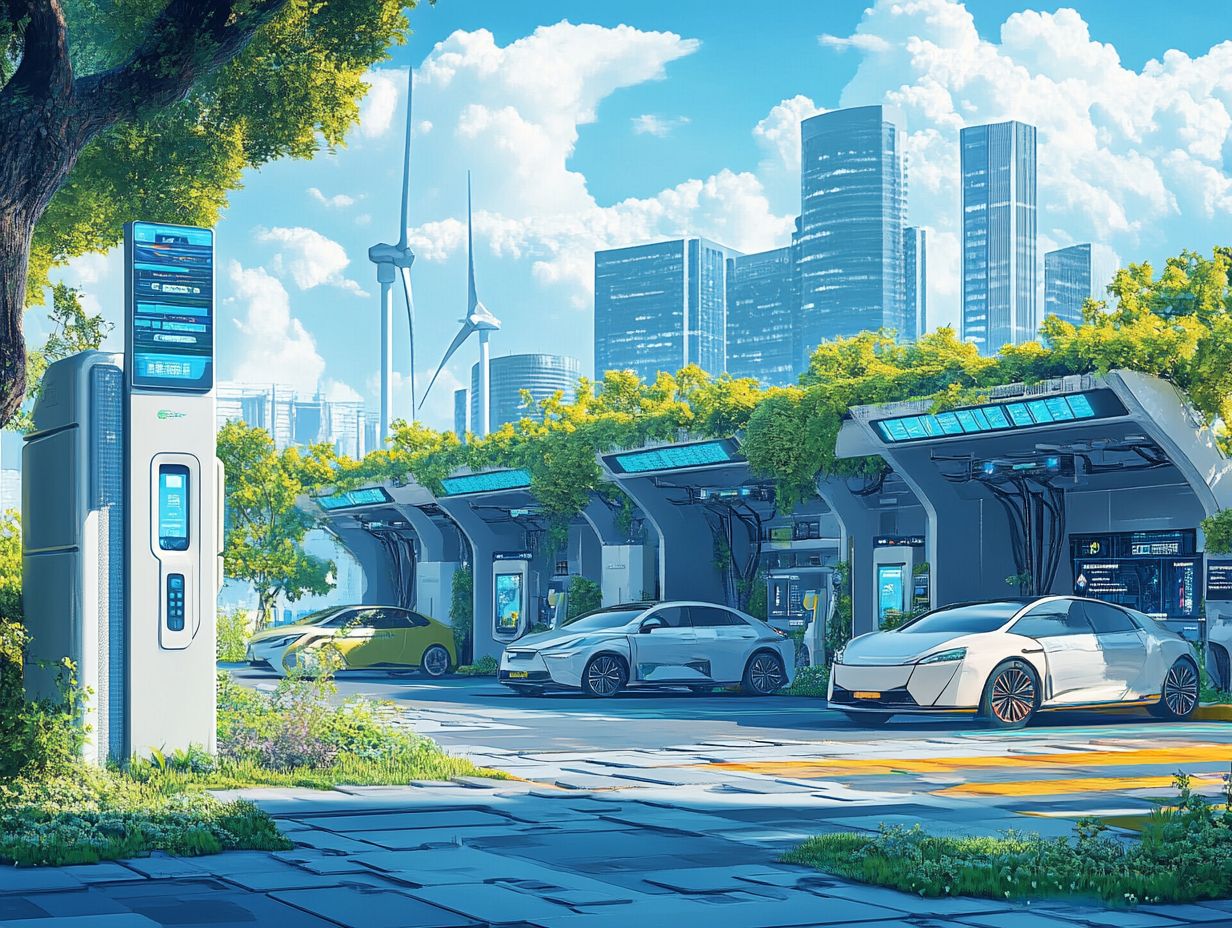
Electric vehicles are changing the game for our planet! Their widespread adoption is not just a trend; it plays a crucial role in reducing your carbon footprint and advancing clean energy initiatives.
By aligning with climate goals and promoting the use of zero-emission vehicles, your transition to electric transportation represents a significant leap toward sustainability and environmental responsibility. Embracing this shift gives you the power to contribute positively to a greener future.
Reducing Carbon Footprint
Reducing your carbon footprint by adopting electric vehicles is a key strategy in today s environmental landscape, playing a significant role in clean energy initiatives and climate objectives. As you make the switch to EVs, consider the overall effect on emissions; it can lead to a notable decrease in greenhouse gas outputs.
Electric vehicles produce zero tailpipe emissions, a stark contrast to traditional gasoline vehicles, which may emit over 4.6 metric tons of carbon dioxide each year, depending on average fuel economy. This compelling difference highlights the potential of EVs in combating urban air pollution and decreasing dependence on fossil fuels.
When your electric vehicle is powered by renewable energy sources like solar or wind, the carbon footprint shrinks even more. Clean energy initiatives such as incentives for solar panel installations and investments in grid infrastructure work in harmony to facilitate your transition to electric mobility.
This aligns perfectly with broader climate goals aimed at achieving net-zero emissions by mid-century.
Challenges and Solutions
Despite the strides in EV adoption, you still face several challenges, such as inadequate charging infrastructure and market failures that impede the shift to electric transportation. To overcome these obstacles, you ll need innovative funding programs and strategic investments to strengthen the charging ecosystem.
The existing charging infrastructure often falls short in terms of breadth and accessibility, leading to anxiety among potential electric vehicle owners regarding long-distance travel feasibility. On top of that, funding gaps for new charging stations and renewable energy integration complicate the landscape, making it challenging for businesses and communities to fully embrace electric mobility.
Engaging both government entities and private investors is essential. Their collaboration could provide the necessary resources and incentives to expand this infrastructure. It’s crucial to act now to build the charging infrastructure we need for a sustainable future!
By fostering partnerships and exploring innovative financial models, you can help accelerate the growth of the EV market and bolster consumer confidence in this sustainable alternative.
Changes in Consumer Behavior
Changes in consumer behavior regarding electric vehicles reveal a notable shift in preferences towards sustainability, significantly influencing EV adoption and charging habits across diverse demographics. As awareness rises, you ll find that consumer sentiment increasingly leans towards electric transportation, reshaping travel patterns and setting new expectations for charging availability and convenience!
Adopting EVs and Charging Habits
Adopting electric vehicles prompts you to rethink your charging habits. You will increasingly recognize the advantages of both Level 2 and Level 1 chargers in your daily routine.
As an EV driver, your preferences for charging locations whether at home or at public stations are reshaping the charging infrastructure landscape. This shift directly influences your purchasing decisions and reflects the growing variety in how electric vehicle owners like you choose to power their cars.
For example, while Level 1 chargers offer a slow and steady option that s perfect for overnight charging, Level 2 chargers provide a more efficient solution, allowing you to charge your vehicle much faster.
As your awareness of energy consumption and environmental impact increases, you become more strategic in your charging practices. You often opt for infrastructure that supports renewable energy sources. This evolving landscape makes it crucial for providers to stay in tune with your preferences and the latest technological advancements, which will ultimately dictate future growth and adaptability in the electric vehicle market.
Future of the EV Charging Industry
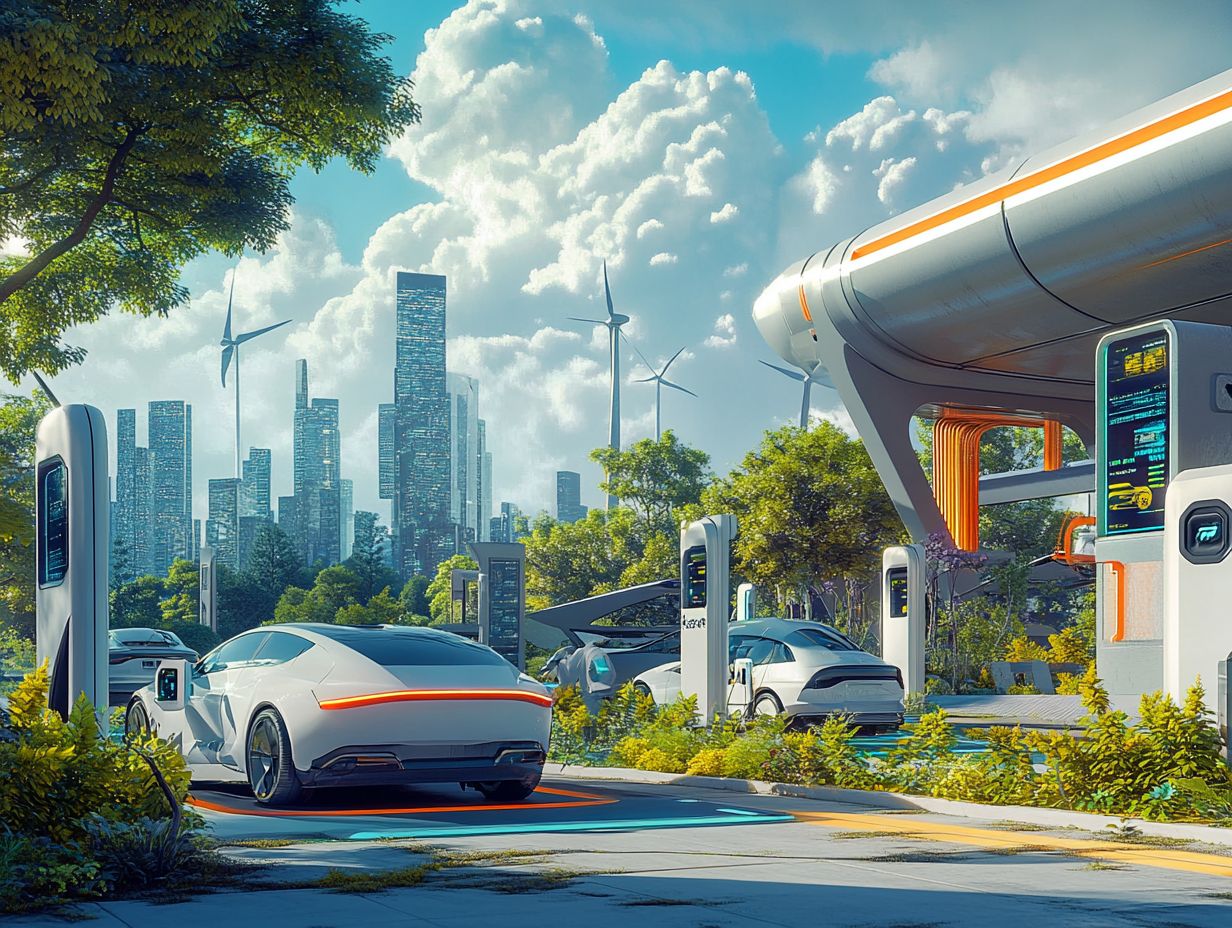
The future of the EV charging industry is positioned for impressive market growth. This growth is fueled by evolving government policies, incentives, and investment needs that promote the widespread adoption of electric vehicles.
As this landscape continues to transform, new opportunities are arising for advancements in charging infrastructure and innovative solutions tailored to meet diverse consumer demands.
Market Growth and Potential Opportunities
The growth of the EV charging sector offers you a wealth of opportunities for innovation and investment, especially in the rapidly expanding Electric Vehicle Supply Equipment (EVSE) market. This landscape is shifting as consumer sentiment evolves and infrastructure investment needs come to the forefront.
You ll find stakeholders are actively exploring new business models to make the most of these changes. As consumer attitudes towards electric vehicles shift, the demand for accessible and reliable charging solutions is on the rise.
With government incentives and public-private partnerships fueling infrastructure investments, now is the perfect time for you to seize the growing demand for charging stations in both urban and rural areas.
Technological advancements, like ultra-fast charging systems and smart grid integrations, are paving the way for fresh investment opportunities. As consumers prioritize convenience and sustainability, the EVSE market is brimming with exciting prospects for innovative companies poised to meet these emerging demands.
Government Policies and Incentives
Government policies and incentives, particularly those from the Biden administration, are pivotal in shaping the future of the EV charging ecosystem. They drive funding programs and clean energy initiatives that promote electric vehicle adoption while addressing barriers to infrastructure development and encouraging consumer engagement.
By channeling substantial federal funds through initiatives like the Bipartisan Infrastructure Law, the administration has laid down a framework that motivates state and local governments to invest in charging stations. For example, programs such as the Charging and Fueling Infrastructure Grant empower communities to significantly enhance their EV infrastructure.
This has led to a noticeable uptick in electric vehicle adoption across various municipalities. The results are clear not only is accessibility improving, but there’s also a marked reduction in greenhouse gas emissions, contributing to a broader shift toward sustainability in transportation.
This multifaceted approach alleviates range anxiety for potential EV users and bolsters the economy by creating jobs within the clean energy sector.
Frequently Asked Questions
What to expect from EV charging in 2030?
In 2030, we can expect the EV charging landscape to be vastly different from what it is today. With the rapid growth of electric vehicles and advancements in technology, here are some things to expect from future EV incentives and charging in 2030.
If you have any questions or insights to share, please feel free to engage with us! Together, we can explore the exciting world of electric vehicles and their future!
Will EV charging be more widely available in 2030?
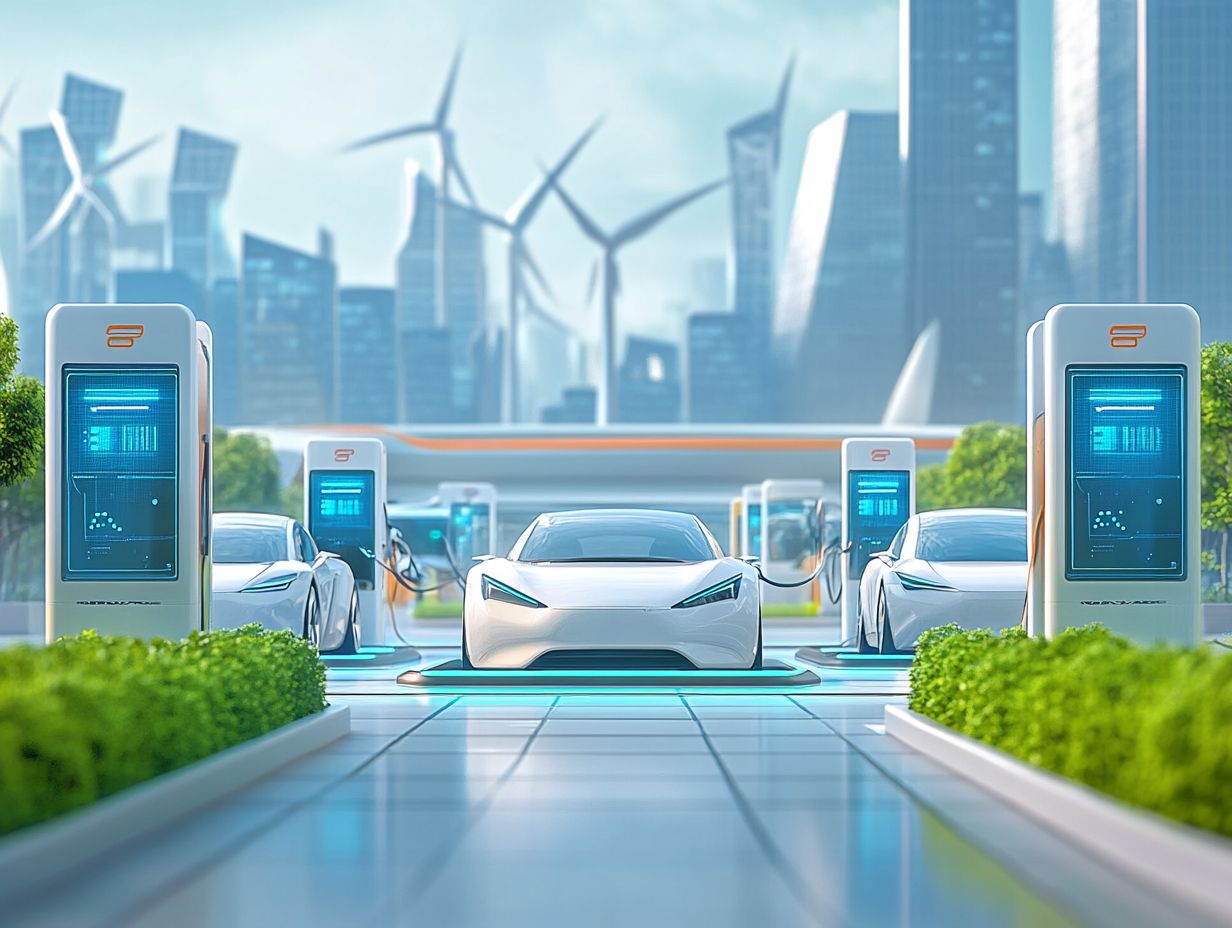
By 2030, you will find more EV charging stations everywhere. Governments, businesses, and individuals are investing heavily to expand this infrastructure to meet growing demand.
What advancements can we expect in EV charging technology by 2030?
Significant advancements are on the horizon for EV charging technology. Fast-charging stations will be common, and your charging time will decrease dramatically.
Expect innovations like wireless charging, bidirectional charging (where your car can send energy back to the grid), and smart charging technology to become everyday options.
How will EV charging prices change by 2030?
As technology evolves, the cost of EV charging is expected to decrease. By 2030, charging your electric vehicle may cost as much as or even less than gasoline or diesel.
Will renewable energy sources play a role in EV charging in 2030?
Renewable energy sources, such as solar and wind power, will have a significant impact on EV charging. Many charging stations are already using renewable energy, and this trend will continue to grow.
What can we expect from EV charging in terms of convenience and user experience in 2030?
In 2030, finding and using EV charging stations will be incredibly convenient. Technology advancements will allow for easy location and seamless payment options.
Smart charging technology will also help you manage your charging times and costs effectively.


